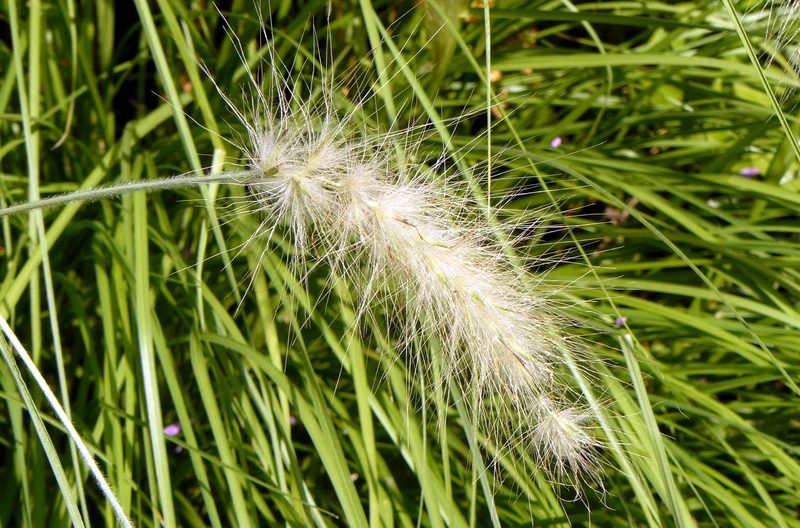If you’re interested to know how to keep ornamental grasses from falling over, staking and division are the methods you have to master. It can be frustrating to see your ornamental grasses tipping and looking disorderly, so maintaining them is crucial. More than separating overgrown grasses, you can use a stake to support the plants and keep an aesthetically-pleasing arrangement.
You don’t have to cut your ornamental grasses or be limited with shorter types if you hate seeing them fall over. However, don’t forget to study the species’ growth habits to allow you to plan their arrangement in the long run. You can also consider growing grasses in the greenhouse as it may be easier to maintain them indoors.

How To Keep Ornamental Grasses From Falling Over And Bonus Tips For Successful Ornamental Grasses Parenting
Staking
The first solution to prevent your ornamental grasses from falling over is by staking them. According to the University of Vermont Extension, the main takeaway that you should remember here is your plants’ growing habit. Therefore, the best staking technique for ornamental grasses would be to place them at the center of the grass clump and secure points with twine.
This way, you can just tie a piece of twine around the grasses to keep them standing vertically. However, remember to tie it, so it doesn’t hinder the movement of the grasses. The best time to stake will also be before the season when the grasses turn brown and dormant.
Some other vital pointers to remember when staking ornamental grasses is that you want the stakes and twines to blend with the plants. Around three stakes should suffice, but this will depend on how large your clumps are. You want to place them where the thickest stems are and where they start arching.
Division
Another method for keeping your ornamental grasses from falling over is by dividing them. Remember that this technique is useful for propagation, but it will also help you control the clumps’ size after several years. You can do this practice every two years as part of your management of ornamental grasses.
The process itself is as easy as cutting the foliage to 6 inches and digging out the entire clump. You can use an ax to cut it into four sections and remove all the dead parts. Then, replant and water these divisions immediately to prevent them from drying.
If your area experiences an extended growing season, you might also benefit from midseason trimming. This will prevent overgrown clumps, and you can just clip off the smaller lower blades surrounding the plant. However, some grasses might still benefit from staking, so choose your method wisely to keep them upright.
Why Do Ornamental Grasses Fall Over?
It would be best also to understand why ornamental grasses usually fall over. Many practices can influence the upright structure of the plants, and avoiding these problems can keep the plants vertical and tall. For example, the location itself can affect the structure of your grasses.
If your area experiences harsh wind and rain, it’s highly likely for the grasses to fall over. Consider growing them in the greenhouse to shelter the grasses against these environmental conditions. Ornamental grasses can also become dry by the end of the growing season, and the remaining old clumps at the center can die, which affects the other upright grasses.
Therefore, it’s best to start staking while the grasses are still green. Speaking of the grasses being dry, practices like overfertilizing can lead to spindly grasses that will fall off easily. You want to fertilize only in the spring after the blades are starting to sprout.
Maintaining Ornamental Grasses
Besides division, cutting back ornamental grasses should be a part of your maintenance practice. However, you want to classify your grasses first into warm-season and cold-season grasses. You can cut back the former by the middle of spring, while cool-season grasses respond well to cutting back early in spring.
As the weather gets colder, warm-season grasses will turn brown, and you can start trimming them at this point. On the other hand, you want to leave the cool-season grasses during the cold season and then cut them back once the season ends. Depending on how demanding your grasses are, you can either use pruning shears or hedge trimmers when trimming the grasses per bundle.
You can then fertilize when new growth starts in spring, but keep the nitrogen levels low to prevent them from falling over. Then, help the plants establish themselves by watering during the first season after you planted the grasses. The supplemental watering will then depend on the requirements of your species.
Conclusion
Do you want to grow ornamental grasses? If so, you have to learn how to keep ornamental grasses from falling over. Unfortunately, it’s common for these grasses to have problems staying upright due to different factors.
It could be from severe environmental challenges, overfertilizing, or overgrown clumps. You can keep the grasses vertically by placing stakes and using twine pieces to keep them from falling over. You can also divide the clumps every two years to prevent the clumps from getting too big.
Overall, you don’t have to worry about keeping your grasses upright. Proper maintenance should help you prevent them from falling over. If your area experiences intense rains and winds, consider growing the grasses in the greenhouse.
